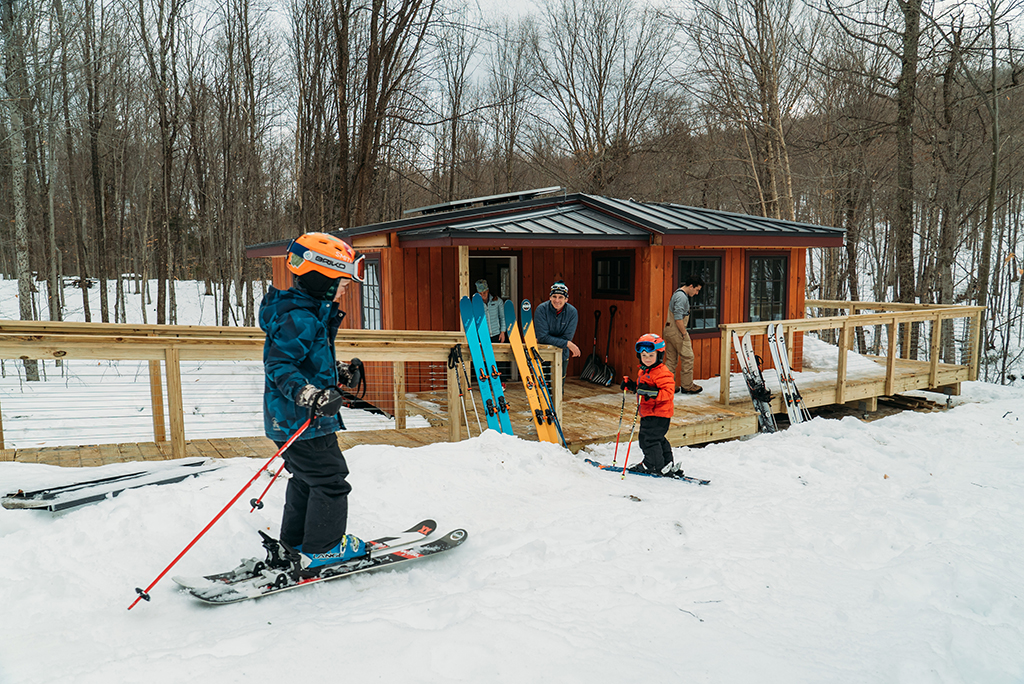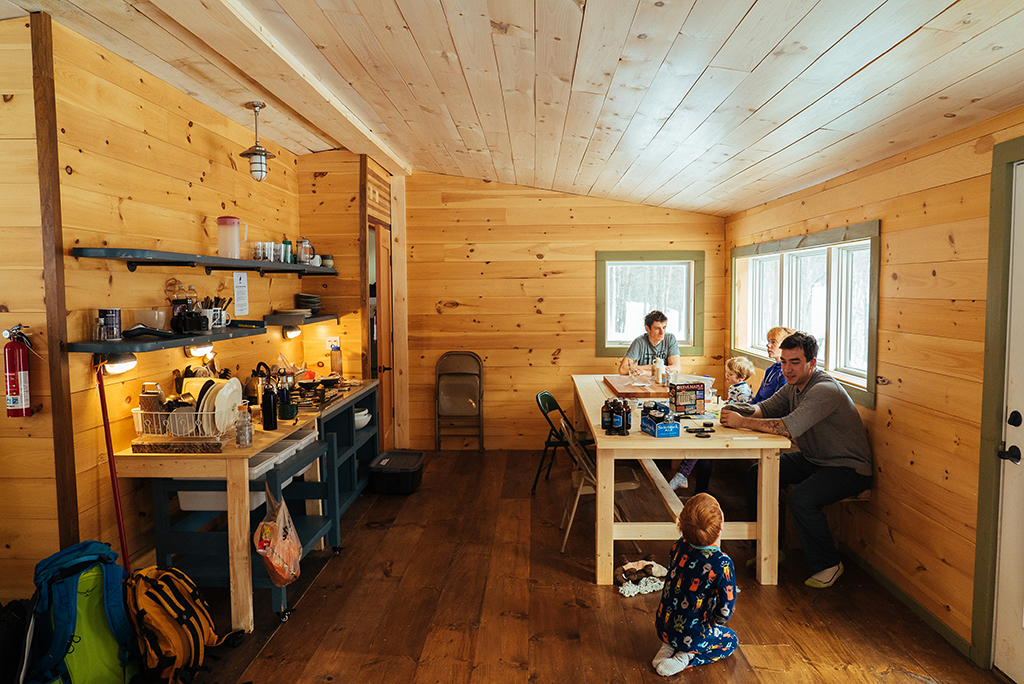
Cabin Fever in Vermont’s Backcountry
December 26, 2018
RJ Thompson wants more people to enjoy the outdoors.
An avid backcountry skier, mountain biker and hiker, Thompson knows just how much Vermont has to offer. Now he wants to help make it easier to enjoy those kinds of outdoor activities by creating a Vermont backcountry hut system of four-season cabins across the state.
Thompson, executive director of the Vermont Huts Association, is working to establish a cohesive, trailside network of new and existing huts. The non-profit association opened its first hut—the Chittenden Brook Hut—in Chittenden in December in the Green Mountain National Forest. The hut, which sleeps up to 10 people, was designed and built by Yestermorrow Design/Build School in Waitsfield with funding from a mix of grants, private donations and membership fees.
“Demand for this type of outdoor experience is so high, and there are so many potential benefits for the state,” says Thompson, who graduated from the University of Vermont Grossman School of Business in 2006 and now lives in Stowe. “Our ultimate goal is to have statewide connectivity for multiple user groups like hikers, backcountry skiers, snowshoers and mountain bikers. But it goes beyond that, too. We also want to help people get out of their offices and homes, to get away from their screens, and just get outside.”
A Collaborative Effort
 Collaboration is key for the network’s success. The organization’s current hut network includes the new Chittenden Brook Hut, as well as existing cabins operated by the Green Mountain Club, Merck Forest and Farmland Center, the Vermont River Conservancy.
Collaboration is key for the network’s success. The organization’s current hut network includes the new Chittenden Brook Hut, as well as existing cabins operated by the Green Mountain Club, Merck Forest and Farmland Center, the Vermont River Conservancy.
The long-term vision is for more huts. The organization is aiming to establish a dozen huts between Killington and Stowe, and is building out a concept map to encompass the full length of Vermont from Canada to Massachusetts. Eventually, Thompson (pictured above) says he hopes the network could expand to different areas of Vermont, such as the Lake Champlain Valley.
Meanwhile, the Vermont Huts Association plans on breaking ground on another hut in the town of Chittenden in the spring. (The new hut will be located on conserved land near Chittenden Reservoir, where a log home that was once privately owned was destroyed by arson).
Vermont Huts Association and the Catamount Trail Association are working together on the upcoming Chittenden project as a section of the Catamount Trail will be rerouted closer to the hut by next winter.
“The collaboration has been really important,” says Greg Maino, trail and communications director of the Catamount Trail Association, the organization that oversees the public-access Catamount Trail, which spans the length of Vermont.“Even though we’re not providing the lodging per se (to backcountry travelers), we want people to have the best experience possible on the trails.”
Staying in one of the huts can range from $65 to $135 per night, depending on the location and season. All of the huts in the network have a heat source, such as a woodstove or propane heat. New huts will offer amenities such as a cooktop, utensils, pots and pans, and sleeping pads.
“We just want people to show up with food and a sleeping bag, and not have to invest in a bunch of gear,” Thompson says, adding that the huts aren’t intended just for seasoned backcountry enthusiasts. “We want families going to the huts, too. That’s really important.”
The Origins of the Vermont Backcountry Hut System
 Thompson has an affection for small spaces. A decade ago, he was living out of his van in Jackson Hole, Wyoming. When Thompson skied in places like the Sawtooth Range in Idaho, he would spend the night in a yurt. On his honeymoon in Switzerland, he and his wife opted to stay in cozy huts rather than fancy hotels.
Thompson has an affection for small spaces. A decade ago, he was living out of his van in Jackson Hole, Wyoming. When Thompson skied in places like the Sawtooth Range in Idaho, he would spend the night in a yurt. On his honeymoon in Switzerland, he and his wife opted to stay in cozy huts rather than fancy hotels.
After returning to Vermont in 2009 and earning his master’s in environmental studies from Green Mountain College, he worked in renewable energy for a few years and also did some race promotion for backcountry events. After talking to statewide outdoor organizations, the idea for creating a Vermont backcountry hut system took off.
Thompson met Devin Littlefield—now the director of marketing and communications for Vermont Huts Association—who has a wealth of knowledge about backcountry huts and who worked with multiple outdoor organizations in Maine and Alaska. Thompson and Littlefield launched Vermont Huts Association in 2016, and now work out of a tiny office on Main Street in Stowe.
“You could say I’ve come full circle since living in my van in Jackson Hole. I have an affinity for living in small places with limited amenities,” Thompson says, adding, “My hope is that these huts can really help foster people’s appreciation for the environment. And hopefully that results in an economic benefit for state, a positive health benefit for Vermonters, and making Vermont an even better state.”
For more information, visit www.vermonthuts.org.
Chittenden Brook Cabin/Cabin photos by Marius Becker, Leave Nice Tracks




No Comments